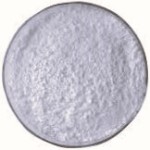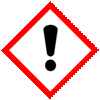CAS Number 2277-92-1, Oxyclozanide IP BP Ph Eur Grade Manufacturers Exporters







CAS Number 2277-92-1, Oxyclozanide IP BP Ph Eur Manufacturer Exporter
For Properties Specifications of Oxyclozanide Click Properties, Specifications of Oxyclozanide Manufacturer.
For Uses of Oxyclozanide Click Uses of Oxyclozanide Manufacturer.
For For SDS MSDS Sheet of Oxyclozanide Click SDS Safety Data Sheet MSDS Sheet of Oxyclozanide Manufacturer.
The Properties and Specifications of Oxyclozanide:
Oxyclozanide BP Ph Eur Grade Specifications:
C13H6Cl5NO3 --- 401.5 CAS 2277-92-1
Action and use: Antihelminthic.
DEFINITION
Oxyclozanide is 3,3′,5,5′,6-pentachloro-2′-hydroxysalicylanilide. It contains not less than 98.0% and not more than 101.0% of C13H6Cl5NO3, calculated with reference to the dried substance.
CHARACTERISTICS
A pale cream or cream coloured powder.
Very slightly soluble in water; freely soluble in acetone; soluble in ethanol (96%); slightly soluble in chloroform.
IDENTIFICATION
A. The infrared absorption spectrum.
B. The light absorption.
C. Melting point, about 208C.
TESTS
Ionizable chlorine: Dissolve 2 g in 100 mL of methanol, add 10 mL of 1.5M nitric acid and titrate with 0.1M silver nitrate determining the end point potentiometrically. Not more than 1.4 mL is required (0.25%).
Related substances: To pass the test by liquid chromatography.
Loss on drying: When dried to constant weight at 60C at a pressure not exceeding 0.7 kPa, loses not more than 1.0% of its weight. Use 1 g.
Sulfated ash: Not more than 0.2%.
The Uses of Oxyclozanide:
Oxyclozanide is used in the treatment and control of fascioliasis in ruminants mainly domestic animals such as cattle, sheep, and goats.
The MSDS-SDS Hazard Statement of Oxyclozanide:
Oxyclozanide SDS, Safety Data Sheet
MSDS Sheet, Material Safety Data Sheet 12-Nov-24
1. Product Identification
Product Name & Other Names: Oxyclozanide.
CAS Number: 2277-92-1
EINECS EC Number: 218-904-0
Relevant uses and uses advised against (if any): Industrial Manufacturing.
Suppliers: As per letterhead.
2. Hazards Identification
GHS, Globally Harmonized System Classification in accordance with 29 CFR 1910
Classification according to Regulation (EC) No 1272/2008
Acute toxicity, Oral Category 4 - H302
Hazardous to the aquatic environment - Chronic Hazard, Category 1- H410
Labeling according to GHS USA & Regulation (EC) No 1272/2008
GHS Label Elements  Harmful |
GHS Label Elements |
Signal Words: Danger.
Hazard Statements:
H302: Harmful if swallowed.
H410: Very toxic to aquatic life with long lasting effects.
Precautionary Statements:
P260: Do not breathe dust/fume/gas/mist/vapors/spray.
P262: Do not get in eyes, on skin, or on clothing.
P270: Do not eat, drink or smoke when using this product.
P271: Use only outdoors or in a well-ventilated area.
P280: Wear protective gloves/protective clothing/eye protection/face protection.
P305+351+338: IF IN EYES: Rinse cautiously with water for several minutes. Remove contact lenses if present and easy to do – continue rinsing.
P403+P404: Store in well-ventilated place. Keep container tightly closed.
3. Composition/Information on Ingredients
Product Name & Other Names: Oxyclozanide.
CAS Number: 2277-92-1
EINECS EC Number: 218-904-0
4. First Aid Measures
Always seek medical attention after first aid measures are provided.
Inhalation: Remove affected person to fresh air; if normal breathing has not returned within a few minutes after exposure, get medical attention.
Skin: Remove contaminated clothing; wash affected area with soap and water; launder contaminated clothing before reuse. Seek medical attention.
Eyes: Immediately, flush eyes for 15 minutes in clear running water while holding eyelids open; seek medical attention immediately.
Ingestion: Drink two glasses of water followed by milk, milk of magnesia or other non-alcoholic liquids; Do not induce vomiting; seek medical attention immediately.
5. Fire Fighting Measures
General Hazards: Contact with the eyes causes immediate severe irritation of the eye and eyelids. Product will support combustion.
Extinguishing Media: Carbon dioxide, dry chemical, chemical foam water fog. Do not use a heavy water stream as it can scatter the fire. Keep containers cool by spraying with water. Use extinguishing media appropriate for surrounding fire.
Fire & Explosion Hazard: May evolve oxides of carbon , oxides of nitrogen, chlorine compounds, and fumes under fire conditions.
In case of fire, wear a full face positive-pressure self contained breathing apparatus and protective suit. Self - contained respiratory equipment; cool containers to prevent pressure buildup and explosion when exposed to extreme heat. Caution - material will support combustion!
Unusual Fire and Explosion Hazards: Closed containers can explode due to buildup of pressure when exposed to extreme heat.
Hazardous Combustion Products: Products of combustion include smoke, toxic fumes, oxides of carbon and nitrogen, chlorine compounds.
6. Accidental Release Measures
Personal precautions, protective equipment, and emergency procedures: Avoid breathing dust/fumes/gas/mist/vapors/spray. Use individual protective equipment (waterproof boots, suitable protective clothing, safety glasses, etc).
Environmental precautions: Do not let the product enter sewer, soil, or water sources.
Methods and materials used for containment cleanup procedures and Storage: Contain spilled material. Cover with an inert, non-combustible absorbent material, (e.g., sand, earth, diatomaceous earth, vermiculite). Vacuum or sweep up and remove to an approved disposal container. For large spills, confine spill, soak up with approved absorbent, shovel product into approved container for disposal.
7. Handling and Storage
Precautions for safe handling: Apply according to good manufacturing and industrial hygiene practices. Ensure proper ventilation. Wash thoroughly after handling. Do not drink, eat, or smoke while handling. Avoid contact with skin, eyes, and clothing. Minimize dust generation. Avoid breathing dust/fumes/gas/mist/vapors/spray. Keep container tightly closed. Avoid ingestion and inhalation. Use individual protective equipment (waterproof boots, suitable protective clothing, safety glasses, etc).
Conditions for safe storage, including any incompatibilities: Store in cool, dry, and ventilated area away from heat sources and protected from sunlight in tightly closed original container. Keep air contact to a minimum. Do not leave the material container open. Store protected from heat, sparks and ignition sources and incompatible materials. Avoid inhalation of dust/mist/vapor. Do not store with incompatible materials like strong oxidizing agents. Keep containers closed when not in use; protect containers from abuse; protect from extreme temperatures, open flames. This material will support combustion. Storage: Room temperature.
8. Exposure Controls/Personal Protection
Engineering Controls: The use of local exhaust ventilation is recommended to control emissions near the source. Provide mechanical ventilation of confined spaces.
Exposure Limits: Not listed.
Personal Protection: Respiratory Protection (Specify Type): None required while threshold limits are kept below maximum allowable concentrations.
Hand Protection: Neoprene, butyl or nitrile rubber gloves with cuffs.
Eye Protection: Chemical safety goggles.
Other Protective Clothing Or Equipment: Apron, or other equipment should be worn to prevent skin contact, safety eyewash station nearby. Practice safe workplace habits. Minimize body contact with this chemical.
9. Physical and Chemical Properties
Appearance: White to off-white powder or crystals.
Odor: No data found.
Odor threshold: No data found.
pH: No data found.
Relative density: 1.6 estimated.
Melting point/freezing point: 208C literature.
Boiling Point: No data found.
Flash point: No data found.
Auto-ignition temperature: No data found.
Decomposition temperature: No data found.
Upper/lower flammability or explosive limits: No data found.
Vapor Pressure (MM Hg): No data found.
Vapor Density (Air = 1): No data found.
Evaporation Rate (water = 1): No data found.
Flammability (solid, gas): No data found.
Partition coefficient: n-octanol/water: No data found.
Solubility: Very slightly soluble in water; freely soluble in acetone; soluble in ethanol (96%).
Viscosity: No data found.
10. Stability and Reactivity
Stability: Stable at normal temperatures and operating conditions.
Conditions to Avoid: Avoid excessively high temperatures and contact with strong oxidizing agents. Direct sunlight. Air contact.
Incompatibilities: Strong oxidizing agents.
Decomposition: Decomposition yields carbon oxides, chlorine compounds, nitrogen oxides and fumes.
Polymerization: Polymerization will not occur.
11. Toxicological Information
Acute toxicity:
Acute toxicity estimate Oral - 1000 mg/kg.
Carcinogenicity: No ingredient of this product present at levels greater than or equal to 0.1% is identified as probable, possible or confirmed human carcinogen by IARC, NIT, ACGIH or OSHA.
Mutagenic Effects: No data found.
Teratogenic Effects: No data found.
Developmental Toxicity: No data found.
Reproductive Effects: No data found.
12. Ecological Information
Toxicity to daphnia and other aquatic invertebrates: EC50 - Daphnia magna (Water flea) – 0.02 mg/l - 48 h.
Persistence and Degradability: No data found.
Mobility: No data found.
Bioaccumulation/ Accumulation: No data found.
Results of PBT and vPvB assessment: No data available for assessment.
13. Disposal Considerations
Dispose of it in accordance with Local, State, and Federal Regulations. Consult local, state, or Federal Environmental Protection Agency before disposing of any chemicals.
14. Transport Information
DOT USA, TDG Canada & ADR/RID Europe:
UN number: 3077
Proper Shipping Name: Environmentally hazardous substance, solid, n.o.s. (Oxyclozanide).
Hazard class(es) 9; Packing group: III.
IMDG/IMO:
UN number: 3077
Proper Shipping Name: Environmentally hazardous substance, solid, n.o.s. (Oxyclozanide).
Hazard class(es) 9; Packing group: III.
ICAO/IATA:
UN number: 3077
Proper Shipping Name: Environmentally hazardous substance, solid, n.o.s. (Oxyclozanide).
Hazard class(es) 9; Packing group: III.
15. Regulatory Information
No more data found.
Section 16 - Additional Information
Disclaimer:
**************************
Our company provides this MSDS sheet in good faith but makes no representation as to its comprehensiveness or accuracy. This SDS sheet is intended only as a guide to the appropriate precautionary handling of the material by a properly trained person using this product. The above information has been compiled from various sources and has the possibility of discrepancy and being out-dated information. Individuals receiving the information must exercise their independent judgment and do further search in determining its appropriateness for a particular purpose. In no case shall our company be liable to loss or damages by the product user.
**************************
Anmol Chemicals & Pharmaceuticals Pvt. Ltd. is an off-shoot of Anmol Chemicals Taloja. It is located in MIDC Taloja and it is manufacturing pharmaceutical grades of API, Excepients, Food grade and Reagent grade chemicals. Anmol Chemicals & Pharmaceuticals Pvt. Ltd. is a several decades old group of companies, engaged in manufacturing, supplying, distributing, wholesale supplies for actual users, retail or small pack supplies for research and development chemicals, fine and speciality chemicals, pharmaceutical excipients, mineral fortifiers in chemically pure, Analytical reagent grade, IP BP USP Ph Eur EP JP and other pharmaceutical grade monograph including FCC Food grade chemicals and Nutraceuticals, Mineral Fortifiers at best prices.

Oxyclozanide Structure
CAS Number 2277-92-1, Oxyclozanide Manufacturer Exporter
ANMOL CHEMICALS & PHARMACEUTICALS Pvt. Ltd.
India, USA, Europe, UAE
TELEPHONE: +912223770100
Navi Mumbai, INDIA
e-mail: info(At the rate i.e. @)anmol.org
Copyright. 19-nov-24
We manufacture:


